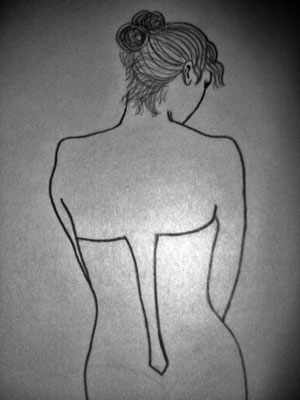All Nonfiction
- Bullying
- Books
- Academic
- Author Interviews
- Celebrity interviews
- College Articles
- College Essays
- Educator of the Year
- Heroes
- Interviews
- Memoir
- Personal Experience
- Sports
- Travel & Culture
All Opinions
- Bullying
- Current Events / Politics
- Discrimination
- Drugs / Alcohol / Smoking
- Entertainment / Celebrities
- Environment
- Love / Relationships
- Movies / Music / TV
- Pop Culture / Trends
- School / College
- Social Issues / Civics
- Spirituality / Religion
- Sports / Hobbies
All Hot Topics
- Bullying
- Community Service
- Environment
- Health
- Letters to the Editor
- Pride & Prejudice
- What Matters
- Back
Summer Guide
- Program Links
- Program Reviews
- Back
College Guide
- College Links
- College Reviews
- College Essays
- College Articles
- Back
Unidentified Persons Awareness
Imagine leaving your home to go to work, school or getting groceries. It's a normal day and the sun shines vibrantly in front of you. But then, your life ends. It doesn't matter how, but it's over. You lose your friends, family, precious memories -- and your identity. When you body is found, within hours, days, weeks, months or even years, nobody knows who you were, despite that your face may have been recognizable, unique qualities such as scars, dental work and birthmarks could be observable.
Over forty-thousand people in this country alone are faced with this problem. Decedents of all ages, races and sexes have spent years being known as "John" or "Jane Does," accompanied by mortuary photographs or a facial reconstruction.
In November of 1979, a teenage girl died and found a day after she died. Her clothing and jewelry were distinct and her dental information, fingerprints and DNA were all recovered with ease. But it's been 35 years and she's still known only as "Cali Doe," named after the town she was discovered in. Like her identity, her killer has never been found.
Moving forward, some aren't as lucky as Cali Doe was. The partial skeleton of a male child was found in Glendora, California in 1984. Unlike Cali Doe, his fingerprints, clothing and DNA were not recovered. Examiner's weren't even sure if he was, in fact, male. However, they do know that he may have been of mixed race, possibly white and Asian and likely had hydrocephalus.
In 2012, the National Center for Missing and Exploited Children (abbreviated as the NCMEC) began a project on Facebook, dubbed as Help ID Me, which they launched to help identify America's unknown children. So far, 279 decedents have been added to their website. They began to digitally recreate the faces of these children and young adults, which involved scanning their skulls into machines and then adding layers of tissue and skin to digital skull in a fairly expensive computer program. For cases where the decedent had not been dead for very long, an artist drew over a sketch of a morgue photo, also with a digital program,
One case, of a girl who was discovered on Valentine's Day in 1988 in Millen, Georgia, a sketch was created earlier in the investigation. Recently, the NCMEC created a composite using the latter method, which looks somewhat different than the original. Hopefully with this new and more accurate technology, such cases will eventually be solved.
What people do for the unidentified is extraordinary. Not only are their faces recreated, but countless websites feature their cases with information ranging from the location they were found and their physical descriptions, as well as missing persons who have been ruled out as possible identities. Such sites, such as The Doe Network and The National Missing and Unidentified Persons System have exceptional coverage and have even assisted detectives in identifying the unidentified.

Similar Articles
JOIN THE DISCUSSION
This article has 0 comments.

Since 2013, I became fascinated with unidentified people, as I was already interested in crime well before I became aware that some never had their true identities found. Since I began my research, I have created several Wikipedia articles and blog entries about such people.